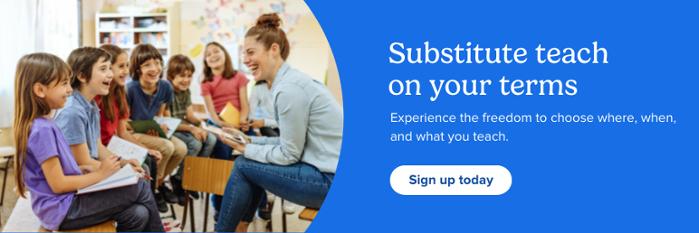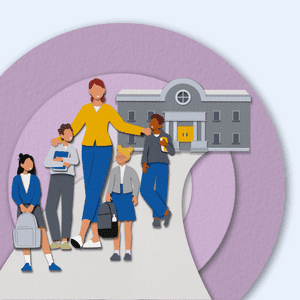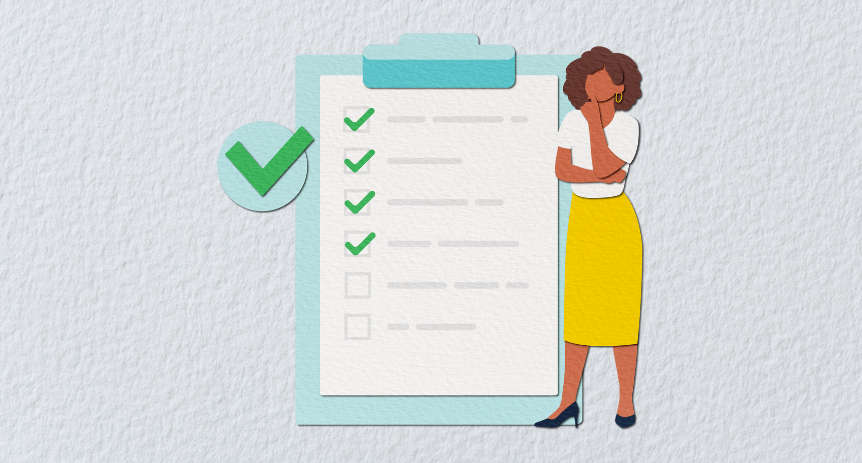A student’s life is largely structured around the routines and rituals of the school day, so it’s normal for them to experience some anxiety when the regular classroom teacher is away.
As a substitute teacher, you can ease their anxiety by being prepared and in control, especially at moments when students are unsure of what they should be doing. Even when the teacher leaves behind the most thorough plans, you’ll find yourself with students who finish work early and need an activity to keep them quiet and engaged.
But not just any activity will work. Just like adults, students want to know that the way they’re spending time is significant–especially when a new person is assigning the work. Students know when they’re given “busy work” in order to kill time. They’ll be much more responsive when they feel respected and appropriately challenged.
Here are some meaningful activities you can use to engage students who finish before their classmates.

Elementary Students
1. Free-Choice Packets (K-2)
To keep students engaged without feeling burdened by more “work,” bring along activity packets that include a range of choices, such as drawing, coloring, number games, matching, mazes, and word searches. Be sure to clarify that students can go through the packet in any order they’d like — students love the freedom of exploration and personal choice.
*Pro tip: To avoid disruptions throughout the day, distribute packets to every student first thing, letting them know they can enjoy the fun activities in the packets whenever they finish early.
2. Reading (3-6)
Students at this level are usually very excited about what they’re reading and look forward to having a chance to read without pressure. You’ll find students in most classrooms will already have books to turn to during free time, but be sure to check in with them at the start of the day.
*Pro-tip: If they don’t have books at their desks, give them time to pick one from the classroom options.
3. Picture Narratives (K-5)
Any substitute who’s repeated the words “Is this a question or a comment?” knows that younger students love to talk about their lives–and the tales are pretty entertaining! Indulge this by giving them a few blank pieces of paper in the morning. Invite them to tell you a story about their lives through drawing pictures. They can draw whatever they’d like– their families, after-school activities, vacations, pets, or their dreams.
*Pro tip: If there’s time to spare at the end of the day, invite students to share their stories with the class if they’d like.
Secondary Students
4. Ask for “Advice”
Students in grade 7-12 are developing some strong opinions and are often excited to share them. At the beginning of the period, share a scenario, and write a question on the board in front of the class, soliciting advice. Those who finish early can write up a list of suggestions for you.
*Pro tip: Need suggestions for what? Be creative! Use current-life situations—“I need to buy a birthday gift for someone”—or tap into their interests. Here are some examples:
- I haven’t had a chance to listen to new music lately. If you finish early, will you make a list of your favorite musicians? What do you love about their music?
- I’m looking for some new things to do in this city. What are some of your favorite things to do?
- I’m thinking about my next vacation. What are the top 3 favorite places you’ve been? What did you like about them?
5. Free Write
Just as reading opens up a new world for younger students, journaling can be an engaging outlet for middle and high schoolers. These students are beginning to hone skills in reflection, narration, and written expression. Whether already have their own notebooks for free writing or will use some loose binder paper, let them know that their written thoughts are theirs to keep. Students will appreciate the trust and will benefit from the stress-relief writing can provide.
*Pro tip — As long as they are putting pen or pencil to paper and doing so quietly, they are free to write (or doodle) what they want.
6. About Me
Substitute teachers face the challenge of not knowing their students. The teachers who make the effort, however, will find that every classroom is comprised of some fascinating individuals! Not only do students typically enjoy talking about themselves, but they’ll appreciate your interest.
*Pro tip: For this activity, distribute an “About Me” page with categories like:
- Favorite Things to Do
- Daily Schedule
- People in My Family
- Things I’m Good At
- Five Goals For My Future
7. The List of Five
In secondary schools, you will typically be teaching a new set of students the same subject each period (and may not know which subject this will be until the day of!). Prepare a list with five things students can choose from if they finish early.
*Pro tip: Communicate the options in a handout or write them on the board in the front of the room. Here is a sample set of options:
- Work on homework
- Journal
- Write a note to a friend
- Read
- About me
Looking for more activities to bring to the classroom? Check out 72+ Classroom Resources for Substitute Teachers.







